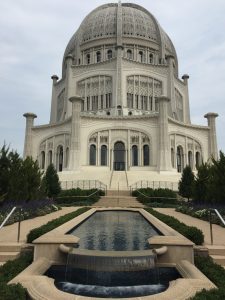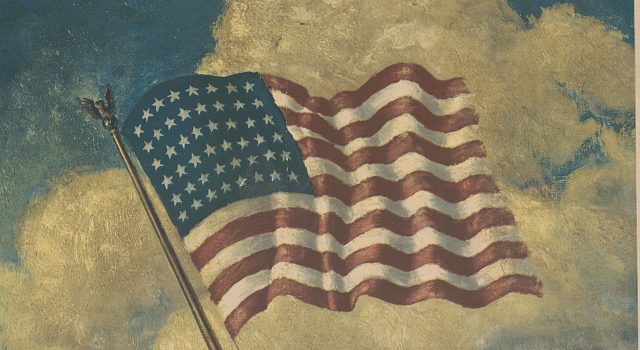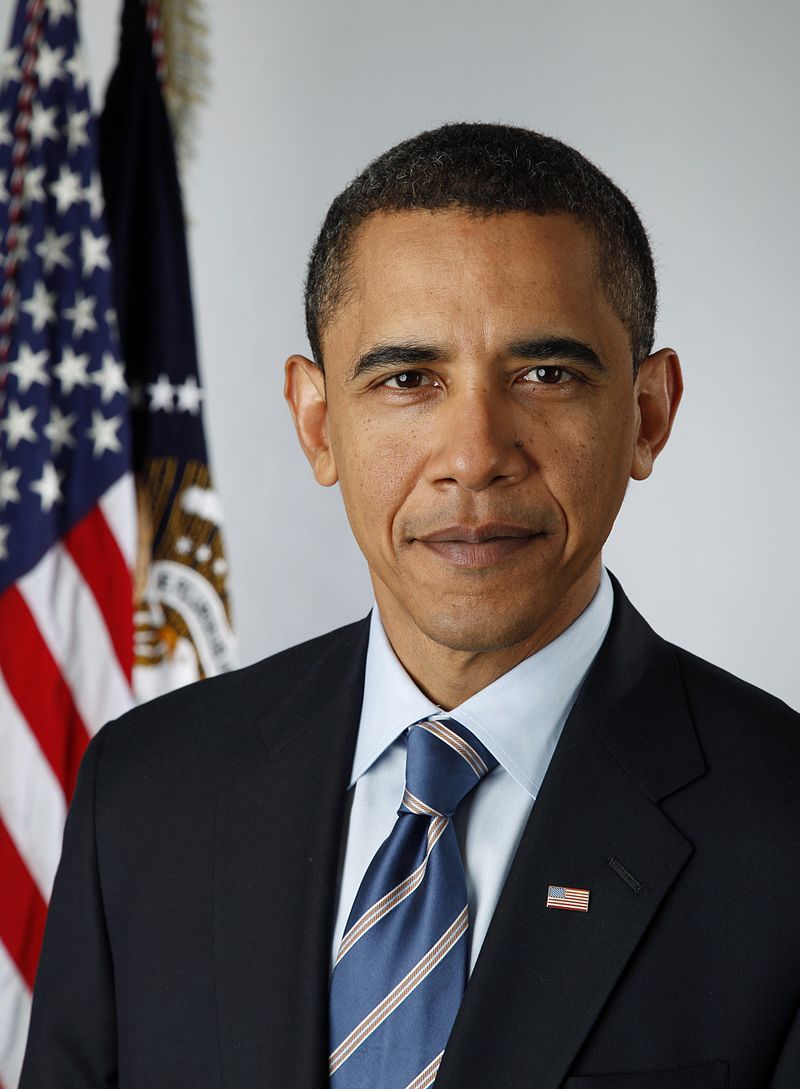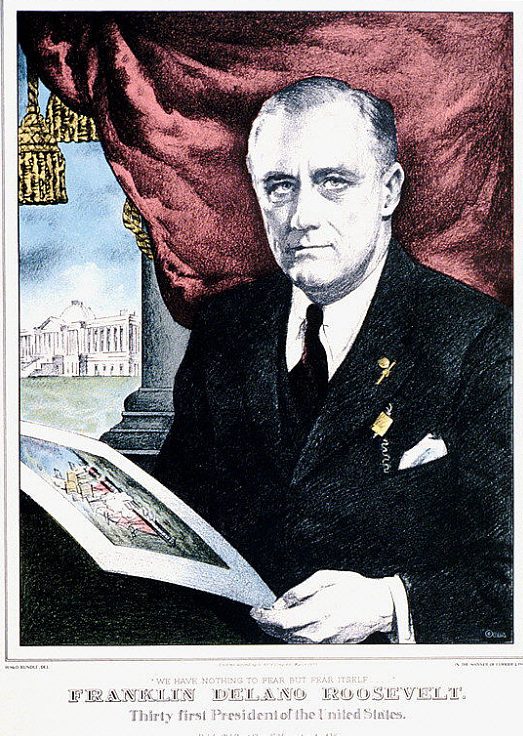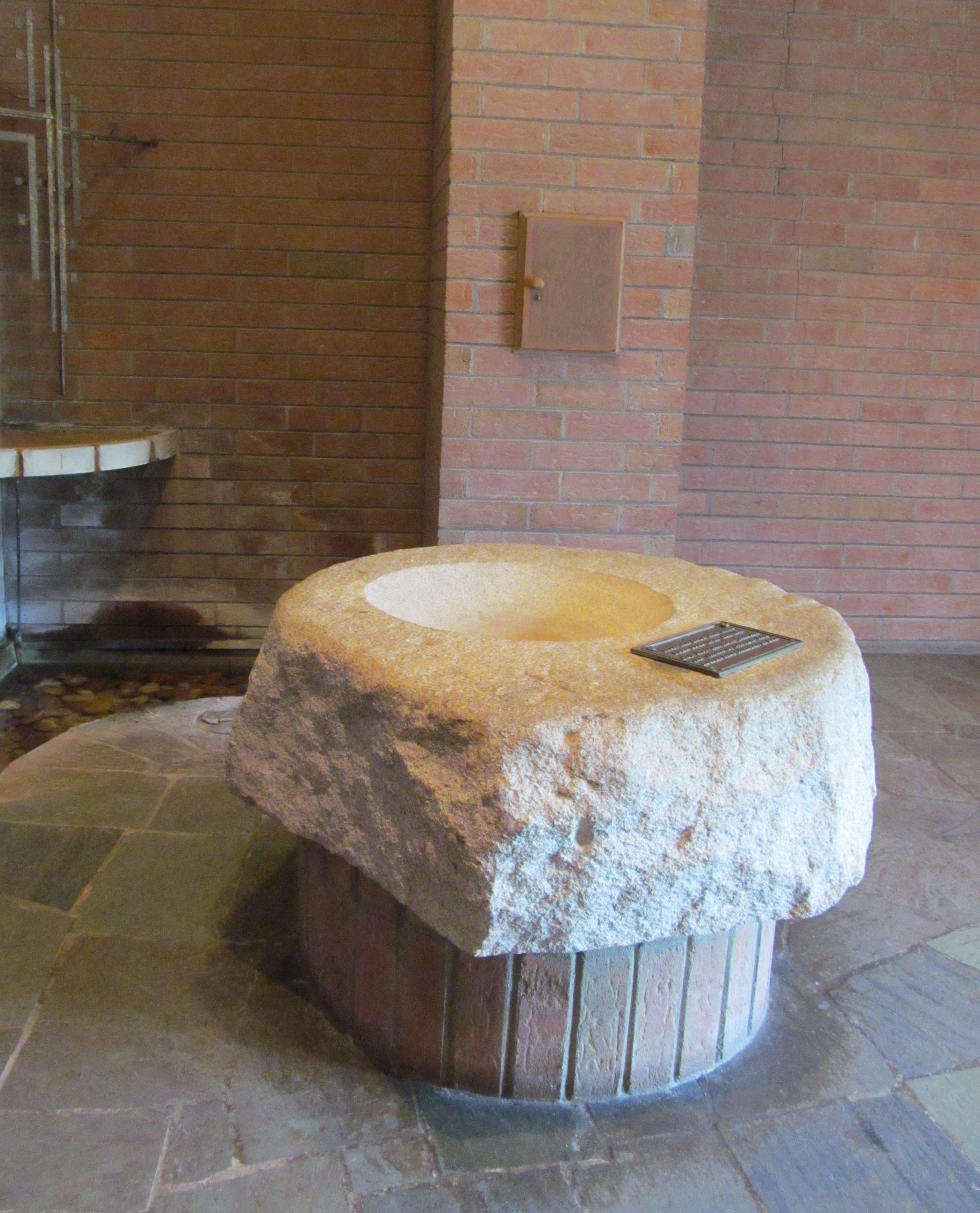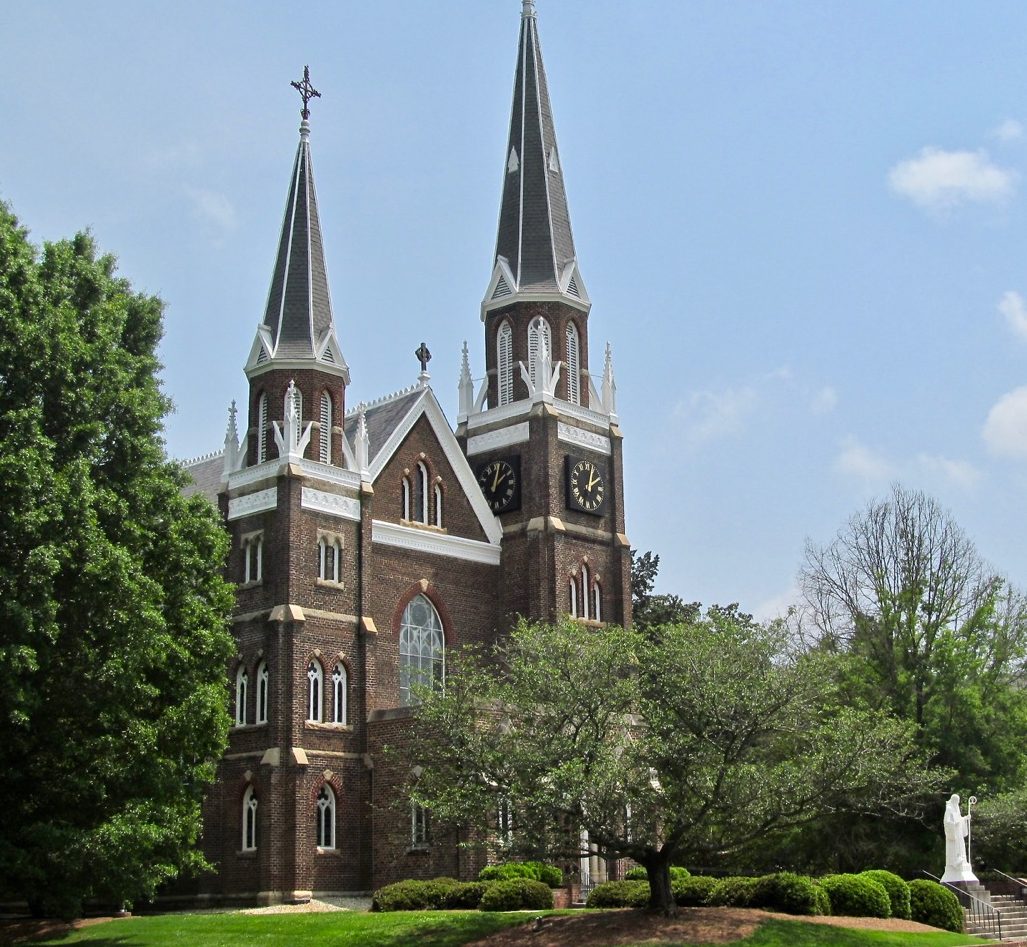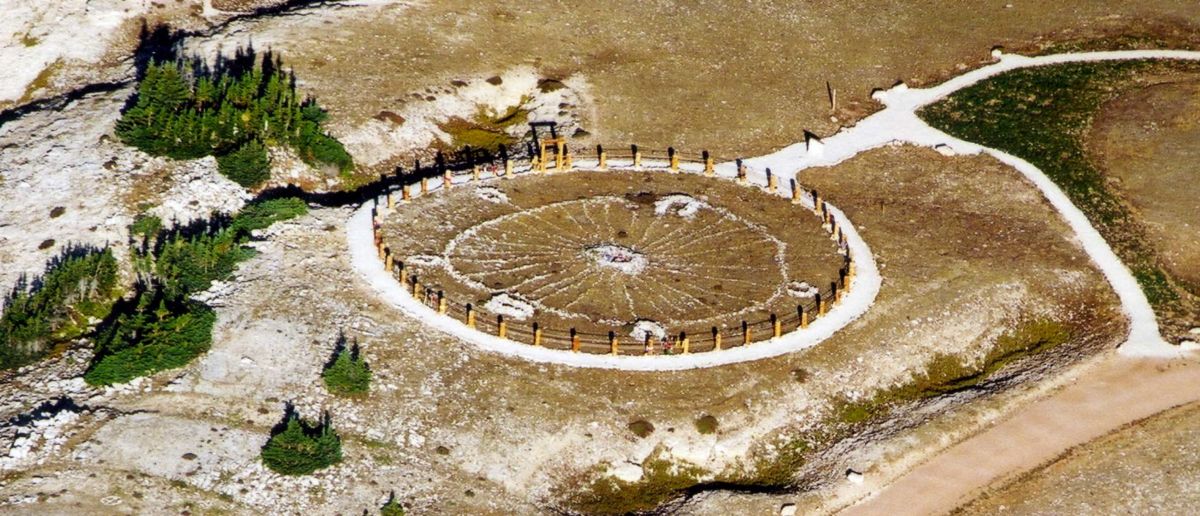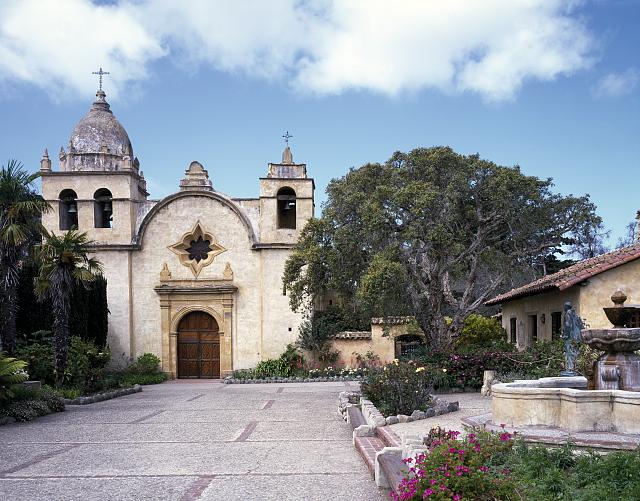The Baha’i Temple
Wilmette, Illinois
In the late 19th century, a new religion offering a synthesis of the world’s major faith traditions began to gain adherents in the US.
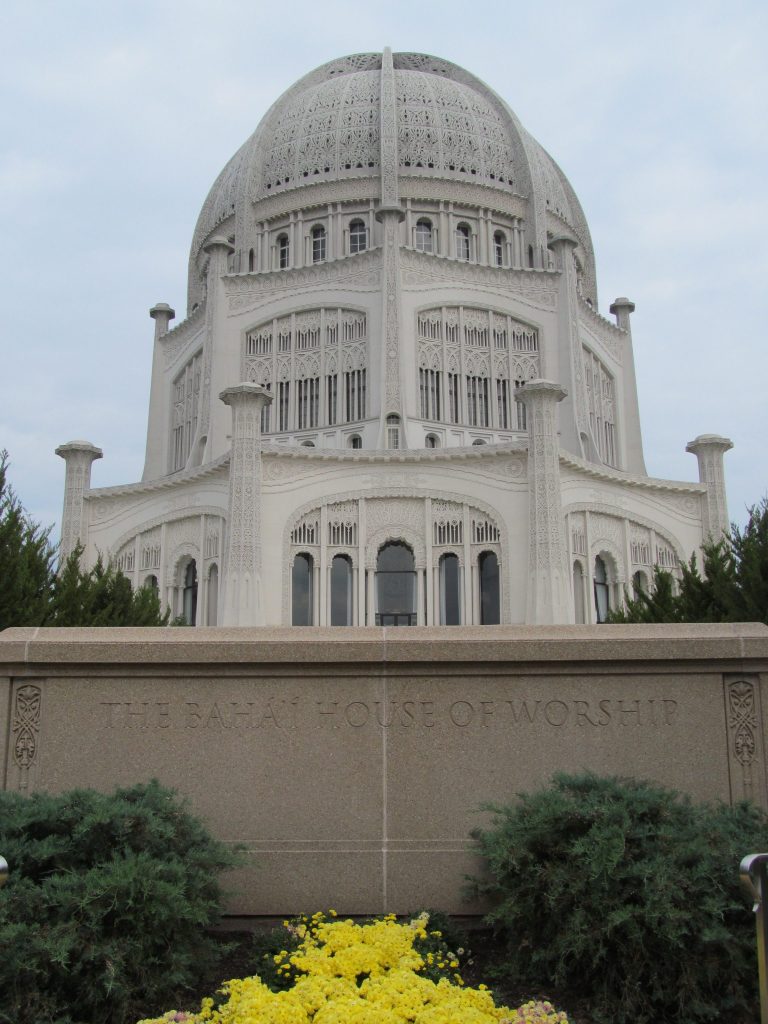
Baha’i Temple, Wilmette, Illinois. Photo by David & Ellen Tucker.
The Baha’i faith arose in Iran and from Iran’s Shia Islamic traditions in the 1840s. It teaches the unity of God, religion, and humanity. Adherents of the faith believe that key figures in other religious traditions – Moses, Buddha, Jesus, Krishna, and Mohammed – are also prophets sent by God at various points in history to establish religions suitable to their time and place. This religious history, a gradual and still ongoing revelation, will lead finally to the establishment of universal peace and justice. The Baha’i faith recognizes its founder, Mírzá Husayn `Alí (1817–1892), and Siyyid `Alí-Muhammad (1819–1850), who prophesized the coming of Mírzá Husayn `Alí, as the two most recent of God’s messengers. Because the faith arose out of Islam but does not consider Mohammed as the final messenger of God, Muslims consider members of the Baha’i faith heretics. For this reason, Baha’is have suffered persecution by Muslims, most recently and notably in Iran.
Estimates of the number of adherents to the faith world-wide vary between five and seven million. Estimates also vary of the number of adherents in the United States. One recent estimate by the official Baha’i organization in the United States put the number of Baha’is in America at about 150,000.
Converts to the Baha’i faith began to appear in the United States in the 1890s, during a period when interest in religions outside of the Christian and Jewish traditions was growing in the United States. The World’s Parliament of Religions convened in Chicago in September 1893 (during the Columbian Exposition, a world trade fair timed to coincide with the 400th anniversary of European discovery of the Americas). At the parliament, a speech by a Christian missionary to Syria mentioned Mírzá Husayn (then living under house arrest in Acre, in Ottoman Palestine, now Israel). The speaker heralded as “Christ-like” Husayn `Alí’s call “that all nations should become one in faith and all men . . . brothers.” These remarks in 1893 are thought to be the first recognition of the Baha’i faith in the United States.[1]
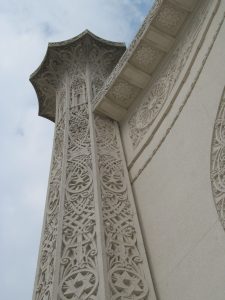
Detail, Baha’i Temple, Wilmette, Illinois. Photo by David & Ellen Tucker.
The Baha’i faith has no clergy. Elected councils at local, national and international levels run the affairs of the faith, which include organizing study groups, lectures, and devotional gatherings as well as building temples and other meeting places. Anyone may become a member of the faith by accepting the teachings of Mírzá Husayn `Alí, known to the Baha’i as Baha’u’llah, or “the Glory of God.”
In keeping with its global mission, the Baha’is have built eight temples around the world. Each of the temples is different, but all are nine-sided domed structures surrounded by gardens. This design represents the Baha’i belief in the ultimate unity of religions and humanity under one God. (In the Baha’i faith, as in Hinduism, the number nine – for a variety of reasons, including the fact that it is the highest single digit – symbolizes completion and perfection.) All of the temples are built with donations only from adherents to the faith.
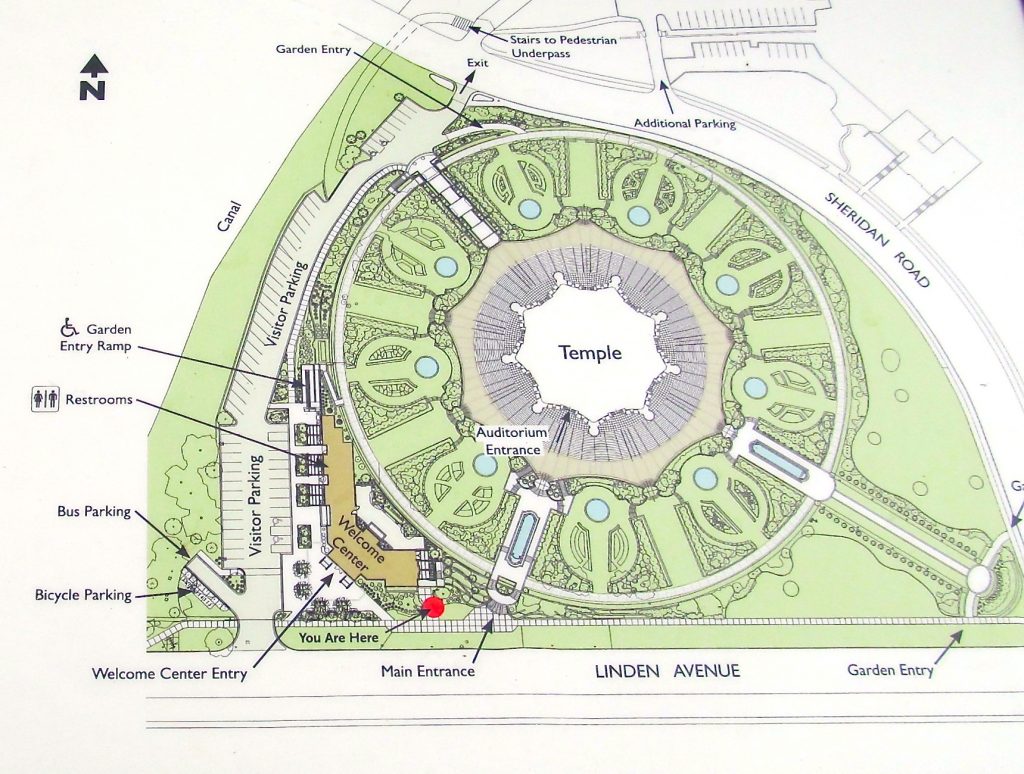
Plan of Baha’i temple Wilmette, Illinois. Photo by David and Ellen Tucker.
One of the eight temples is in Wilmette, Illinois, just north of Chicago. It was designed by noted architect Louis Bourgeois, himself a member of the Baha’i Faith.
The cornerstone was set in 1912; construction began in 1921; the temple was finished and dedicated in 1953. On each of the nine sides of the temple, an arched doorway offers entrance into one large, light-suffused worship space. This design suggests the multiplicity of entryways, via separate religious traditions, that lead to one unified faith. While the intricate filigree patterns cut into the walls and dome of the structure reflect the origins of the faith in the Islamic middle east, close examination reveals a range of symbols – including circles, triangles, serpent shapes, suns, flames, stars ranging from five to nine points, and crosses – from a range of ethnic cultures and religious traditions, all woven into a unified design.
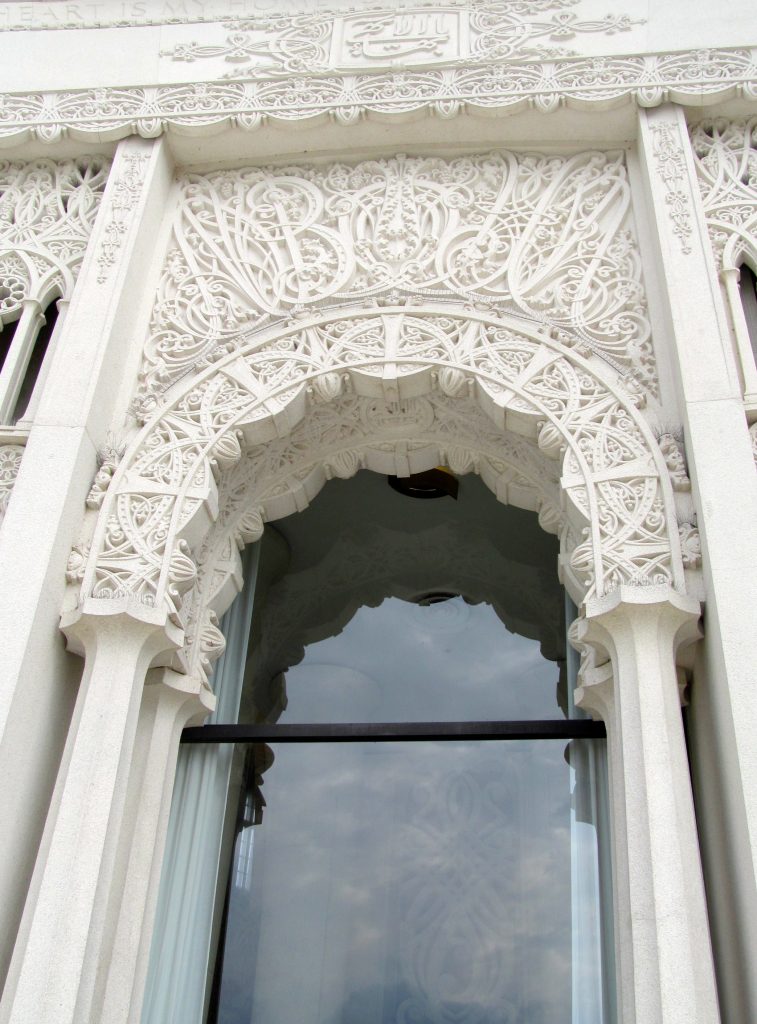
Detail, Baha’i Temple, Wilmette, Illinois. Photo by David & Ellen Tucker.
Notes
[1] Henry Harris Jessup, “The Religious Mission of the English-Speaking Nations,” The Dawn of Religious Pluralism: Voices from the World’s Parliament of Religions, 1893, ed. Richard Hughes Seager (La Salle, Illinois: Open Court, 1993) 37, 42.
